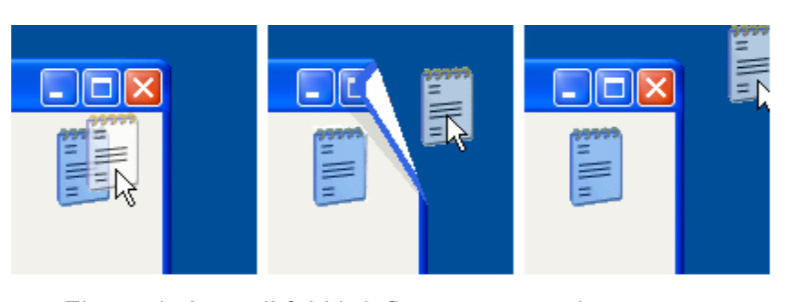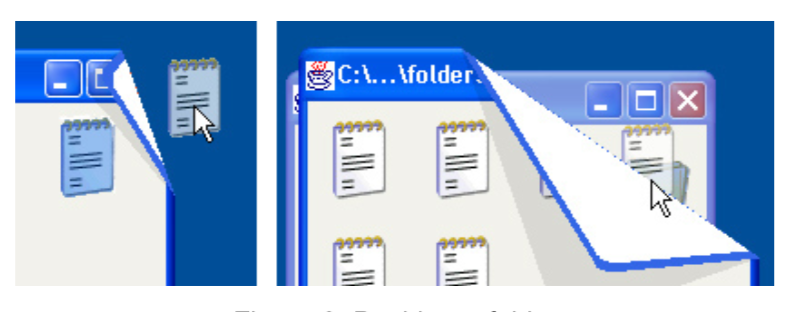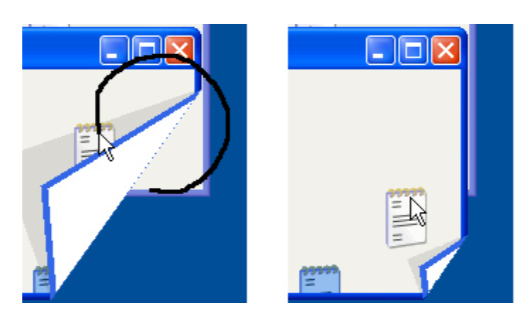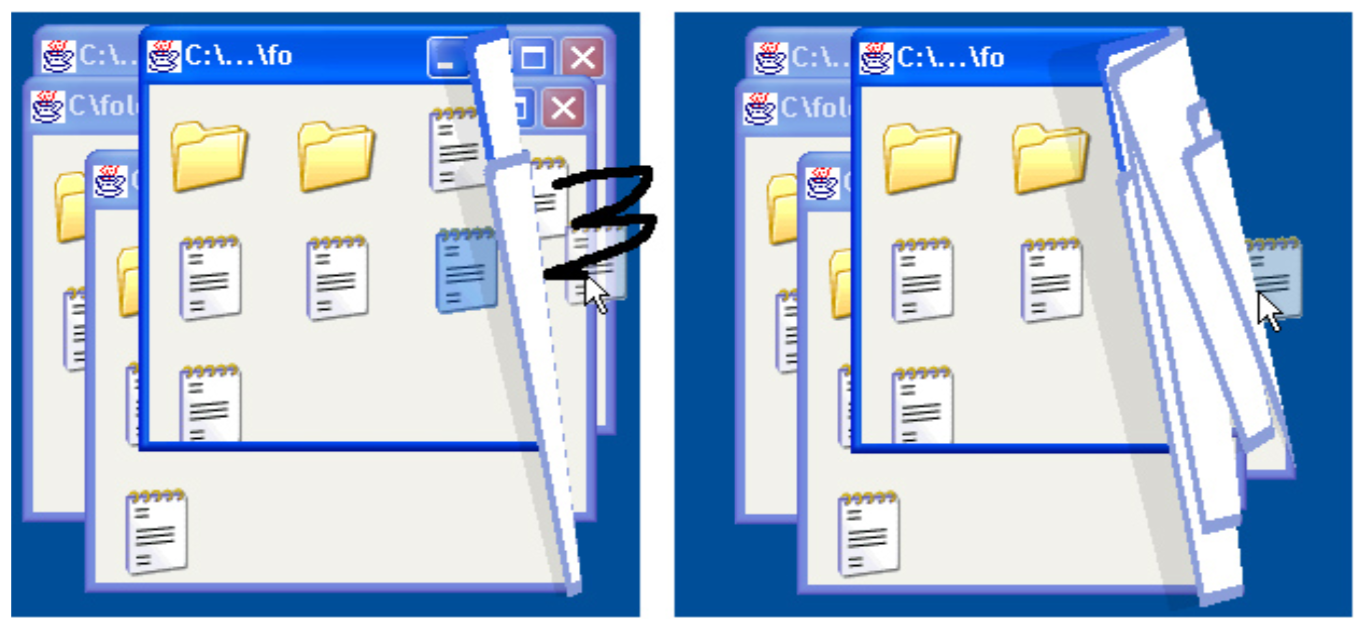Drag and drop between overlapping windows
Validation level: 4. Other peer-reviewed paper publication
The study proposed a new drag-and-drop technique between overlapping windows. Dragging and dropping between windows is a common challenging task on virtual desktop. In this study, the fold-and-drop technique presented offers a natural and efficient way of performing those tasks. It shows how this technique successfully builds upon several interaction paradigms previously described while shedding new light on them.
Publications
Also featured in
Storyboard of Functions

Each time the mouse leaves a window, a small fold named transient fold appears at the exit area during a brief period of time, then springs back.

During the short time a transient fold remains visible it can be crossed back with the mouse to be confirmed, in which case it will remain folded.

When a fold keeps being pushed so that only a small part of the pushed window content remains visible, the window fades away and eventually disappears. This can also be done with a single long gesture. As the picture showed, sliding away the window

Moving around the fold and pushing it from the inside to the outside will unfold it entirely.

Leafing through windows while holding the dragged object.
Highlights:
This drag-and-drop technique uses a metaphor as Beaudouin-Lafon’s peeling-back technique. The animated fold feedback, which helps the novice understand the underlying metaphor, is not needed anymore as faster gestures are used. Furthermore, it combines gestures with direct manipulation, as it interprets the mouse trajectory during drag-and-drops.
Limitations:
Although the author implemented the new interaction technique, this technique is lack of validations. There is no further experiment to prove its feasibility.